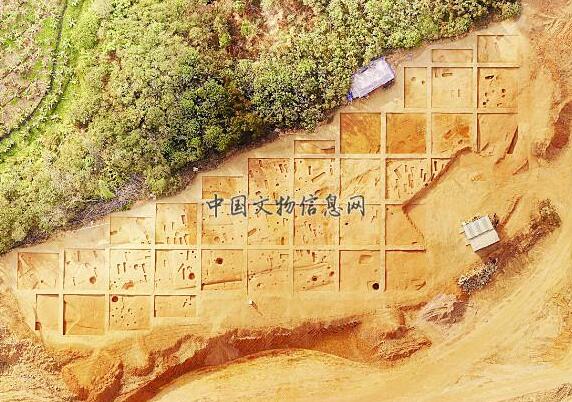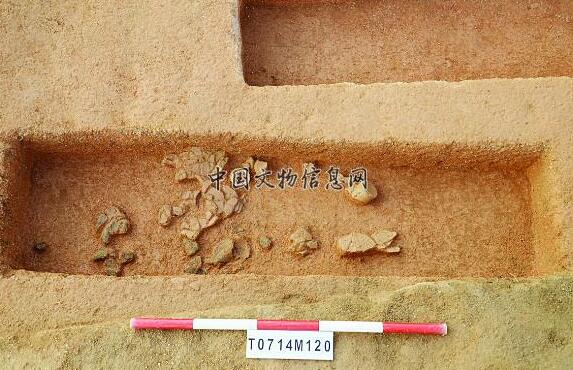Jade Cong of Liangzhu Culture Found in Gancaoling Site, Guangzhou
From September 2017 to January 2018, the archaeological team of Guangzhou Municipal Institute of Cultural Relics and Archaeology conducted a salvage archaeological excavation to Gancaoling Site. The site was located in Jiulong Town, Huangpu District, Guangzhou City, with an excavation area of about 2900 square meters; clearing up 170 tombs from the late Neolithic period to the Warring States period, 81 ash pits, 3 ditches, 40 post holes, and more than 200 pieces of cultural relics made of clay, stone, jade were found.

Aerial photo of Gancaoling Site

Tombs distribution of T0714
All the tombs were rectangular earthen shaft pit tombs, including 160 tombs of the late period of the Neolithic age, mainly in the direction of the east and west, and some tombs were paralleled. The majority of the funeral objects were pottery Ding-tripod tempered with sand, and Fu (caldron), muddy pottery Dou (stem-bowl) and Plate, but most were broken, in addition to several jars with complete muddy ring foot. It is estimated that there were four styles of the funeral objects: 1. Complete objects when buried, but crushed by the fillings because of the material were fragile; 2. Complete objects when buried, but were broken intentionally in order to be put on the bottom of the tomb, which was the most common situation; 3. All the funeral pottery were fragments when buried, no complete object was found; 4. Some fragments were broke intentionally, and some were broke by the fillings. Apparently, the broken funeral objects customs was the common situation found in the Gancaoling Cemetery, which was similar to the Shixia Culture in the north of the Hubei province, but some tombs without funeral objects. Because of the acid soil, no human bones or funeral utensil remains was left.

Burial potteries and jade rings in tomb M120
The stone and jade objects were not the majority of the funeral objects, the tombs like that was relatively large scale, with a large number of pottery and pottery shard, indicating that there was ranking difference between tombs. Stone tools included stone adze with shoulders, stone spade with holes, stone axe, stone arrowhead and etc. The rectangular pierced stone spade was exquisite, no using trace was found, might be used as sacrificial vessel. The jade ware included jade ring, jade Jue, jade adze and etc. Preciously, 1 piece of Jade Cong-tube fragment was found, which was small with only 3.3 centimeters high, round square, thin surface, with only 0.5 to 0.6 centimeters thick. Two ends of the fragment both had a hold, drilling from the inner to the outer. Because of the heavily worn, whether there was pattern on the surface or not could not be judged. No mater material or mode, the Jade Cong was likely to the Liangzhu Culture. From the pottery, it is known that the Liangzhu Culture influenced Guangzhou, Zhujiang River Delta, through Shixia Culture.

fragments of jade cong
From the characteristic of the pottery, the time period of Gancaoling Site was not too far away from that of Chaling, similar to that of the middle and late period of Shixia Culture. The pottery Ding-tripod tempered with sand and muddy pottery Dou unearthed from the tombs and ash pits, in addition to jade ring, jade Cong and etc, revealing that they were influenced by Shixia Culture, and around Tai Lake Liangzhu Culture. From the scale of the tombs, and the ranking of the stone and jade sacrificial objects, Gancaoling Tomb was lower than former, which was the reasonable outcome of the influential ability was decreasing during the cultural transmission. (Translator: Wang Jue)

